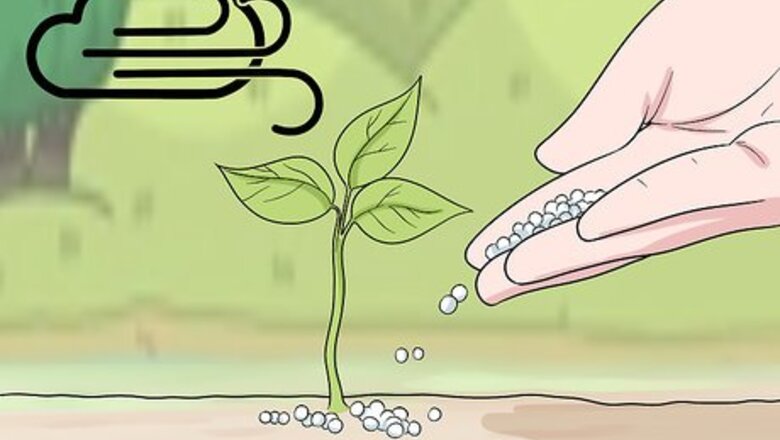
views
Applying Urea on Its Own
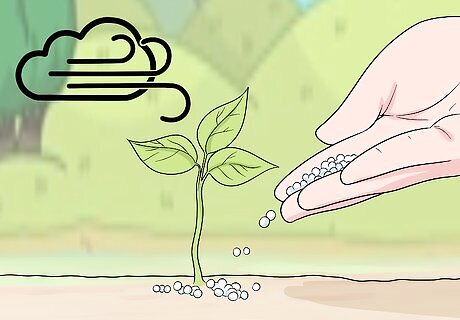
Minimize ammonia loss by applying urea on a cool day. Urea is best applied on a cool day, in weather between 32° to 60° F (0°-15.6° C), and with little to no wind. At colder temperatures, the ground is frozen, making it difficult to incorporate the urea into the soil. At higher temperatures, and in windy conditions, the urea is broken down faster than it can soak into the soil.

Use a urea fertilizer with a urease inhibitor before planting. Urease is the enzyme that begins the chemical reaction that turns urea into the nitrates plants need. Applying urea fertilizers before planting leads to high amounts of the urea being lost before it can benefit your plants. Using a fertilizer with a urease inhibitor can slow the chemical reaction, and helps retain urea in the soil.
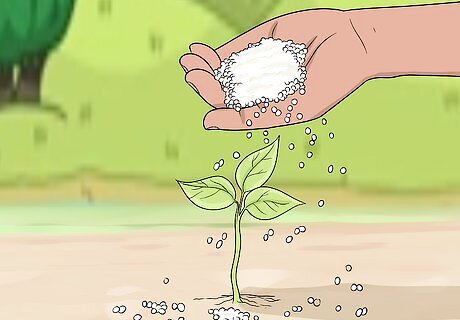
Spread the urea evenly across the soil. Urea is packaged and sold as small, solid pellets or granules. Broadcast the urea with a fertilizer spreader or sprinkle the pellets by hand evenly across your soil. For most plants, you will want to keep the urea close to the plant's roots, or close to where you will plant the seeds.

Wet the soil. Before urea is turned into the nitrates your plants need, it first becomes ammonia gas. Because gases can easily escape from the surface of the soil, applying fertilizer when the ground is wet will help to incorporate the urea into the soil before the chemical reaction begins. This way, more of the ammonia is trapped within the soil. The top half inch (1.3 cm) of soil should be wet to keep as much ammonia gas in the soil as possible. You can water the soil yourself, apply the urea before it rains, or apply within 48 hours after the snow on your fields has completely melted.

Till the soil to incorporate the urea. Tilling your fields or garden is a great way to incorporate the urea fertilizer into the soil before any of the ammonia gas can be lost. Harrow, drag, or hoe the field in order to incorporate the urea into the top layer of the soil.

Control the amount of nitrogen you give to potato plants. Certain varieties of potatoes can handle high levels of nitrogen, while others cannot. Be cautious and treat all potatoes the same way. Avoid giving potato plants large quantities of nitrogen with your urea fertilizer. Urea fertilizers can be applied directly onto potato plants, or in a solution with other fertilizers, as long as the solution is made up of 30% nitrogen or less. Solutions of urea fertilizer that are more than 30% nitrogen should only be applied to fields before potatoes are planted.

Fertilize grains with urea on a mild day. Urea can be applied directly onto most cereal grains, but never in temperatures above 60° F (15.6° C). When applied in warmer temperatures, the plants will give off an odor of ammonia.
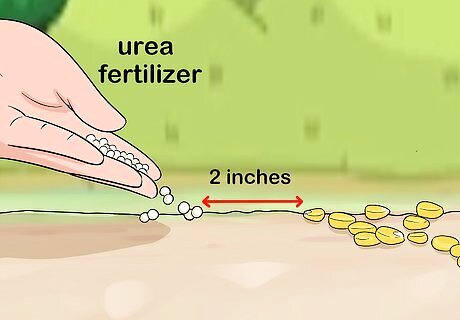
Apply urea to corn seeds indirectly. Only apply urea to corn indirectly, by spreading the urea onto soil at least 2 inches (5 cm) away from the corn seeds. Direct exposure to urea is toxic to the seeds, and greatly reduces the corn plant's yield.
Mixing Urea with Other Fertilizers
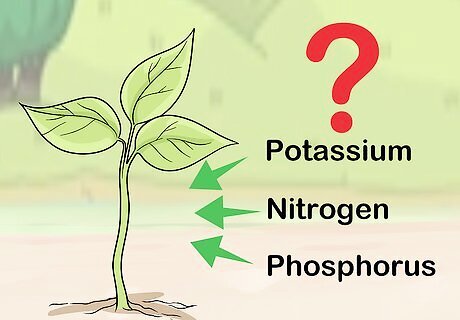
Determine your ideal fertilizer ratio. Fertilizer ratios, also called N-P-K numbers, are a series of 3 numbers that tell you how much of a fertilizer mixture, by weight, is made up of fertilizers rich in nitrogen, phosphorus, and potassium. If you have a sample of your soil studied, you will be provided with an ideal fertilizer ratio that will help make up for your soil's nutrient deficiencies. Most hobbyist gardeners can find premixed fertilizers that will suit their needs at a plant nursery or garden supply center.
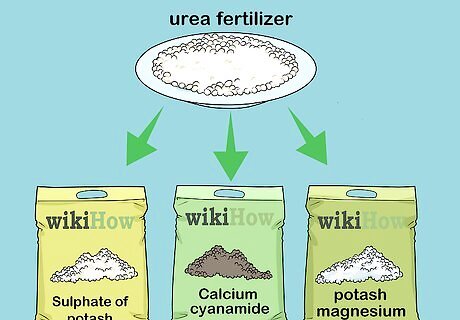
Combine urea with additional fertilizers to create a stable fertilizer mixture. Urea provides plants with nitrogen, but other elements, like phosphorus and potassium, are important for plant health as well. Fertilizers that you can safely mix and store with urea include: Calcium cyanamide Sulphate of potash Sulphate of potash magnesium
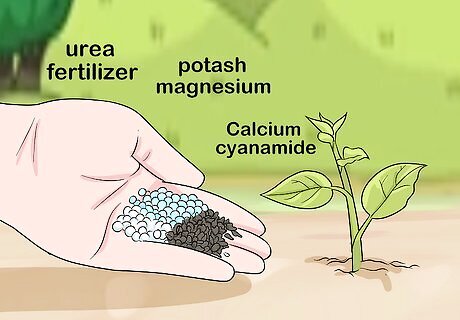
Mix urea with certain fertilizers to fertilize plants immediately. There are certain fertilizers that can be mixed with urea, but lose their effectiveness after 2-3 days because of the reactions that occur between the fertilizer's chemicals. These include: Chilean nitrate Sulphate of ammonia Nitrogen magneseia Diamonnium phosphate Basic slag Rock phosphate Muriate of potash

Prevent unwanted chemical reactions from harming your crops. Some fertilizers will react with urea to either create a volatile chemical reaction or render the fertilizer mixture completely useless. Never combine urea with the following fertilizers: Calcium nitrate Calium ammonium nitrate Limestone ammonium nitrate Ammonium sulphate nitrate Nitropotash Potash ammonium nitrate Superphosphate Triple superphosphate
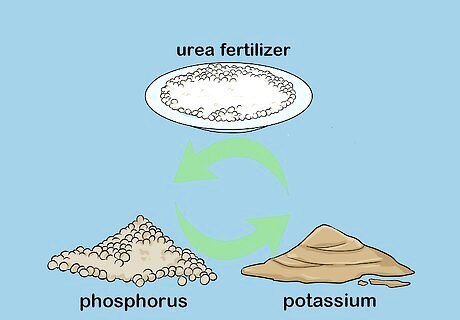
Blend urea with phosphorus and potassium-rich fertilizers for a well-balanced fertilizer. Referencing the list of fertilizers that are and are not effective to mix with urea, choose sources of phosphorus and potassium to add to your fertilizer mix. Many of these are available at nurseries and garden supply stores. Add each of your chosen fertilizers together, according to the weights given by your fertilizer ratio. Mix them together thoroughly. This can be done in a large bucket, in a wheelbarrow, or with mechanical mixers.

Spread your urea-based fertilizer evenly across your crops. Apply your fertilizer mixture as you would apply urea on its own, spreading it evenly across the soil. Then water and till the soil in order to incorporate the fertilizer. Urea is less dense than other fertilizers. If you are using spinning-type equipment to spread your urea-based fertilizer over large distances on your farm, keep your spread width below 50 feet (15.2 m) to spread the fertilizer mixture equally.




















Comments
0 comment